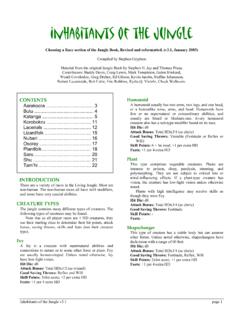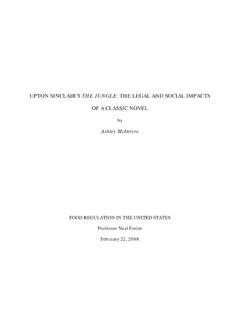Transcription of JUNGLE WARFARE - ibiblio
1 MHICopy 3 WAR DEPARTMENT FIELD MANUALJUNGLEWARFAREWAR DEPARTMENT 27 OCTOBER 1944 CHANNON, R. I C/ S. DEPARTMENT,WASmNWoN 25, D. C., 27 October 72-20, War Deparjment Field Manual; JungleWarfareo is publised for. the irqormation and guidanceof af coiborned.[A. G. (7 Sep 44).]BY ORDER OF THE SECRETARY OF WAVR:G. C, MARSHALL,Chief of :J A. ULIO,'Major 4djutant CenatrAs prescAibed in 9a, EM 21-6:Continewtal: As'ptes'-lbed in paragraph 9a, FM21-6; B (1);-R (1); Bn (1); a (1); Over-seas:T Opns (2) ; Bas C (2)';slaud C2);Def C (2), Base SeCtors (2); Depts (v); SvO(2); in addition to the fdregoing oversgaalistri-bution, troops in the appropriate theaters willreceive distribution on the following basis:Armies (5); Corps (5); D (5); B (5);R (5);Fn (5); C (5).
2 For explanation of symbols,.see FM , R. R DE FIELD MAN U LFM 72-20 This manual supersedes FM 31-20, 15 1941, including Cl, 26 May 1942:C2, 3 August 1942; and C3, 24 September DEPARTMENT * 27 OCTOBER 1944 United Stat Government Printing OffiYashinlgon : 1944 ContentsCHAPTER 1. GENERAL. Paragraphs PageSECTION I. General __-__ 1 1II. Nature of JUNGLE __-__ 2-4 1 III. Effect of JUNGLE onTroops _____---- ' 5-9 4IV. Effect of JUNGLE onOperations -------- 10-15 7 CHAPTER 2. HEALTH, HYGIENE, AND SANITA-TION _____ 16-22 11 CHAPTER 3. JUNGLE I. Training for JungleService _____ 23-24 27II. Requirements of JungleService_____ 25-29 32 III.
3 Weapons, Clothing, 'Equipment ------ 30-32 34IV. Practical Hints forJungle Living____- _ 33 40 39V. Dealings with NativeInhabitants_____ 41-45 57 CHAPTER 4. JUNGLE I. General -__-_____ 46-49 60II. Arms _____-___ 50-55 62 III. Marches and Bivouacs_ 56-58 66IV. Attack _____ 59-64 77V. Defense .._____ 65-73 84VI. Patrols _____-_____ 74-76 89 VII. Special Operations .____ 77-80 93 VIII. Supply _____ 81-88 99IX. Evacuation __-_____ 89 102X. Communication _____ 90-100 103 APPENDIX I. NATIVE PLANTS _____ 1-7 108 APPENDIX II. USE OF JUNGLE MACHETE___ 1-9 136 INDEX ._____. 140 This manual supersedes FM 31-20, 15 December 1941, including 0 1,26 May 1942; C 2, 3 August 19D42; and 0 S3,24 Septenmber 1 GENERALS ection I.
4 GENERAL1. GeneralIn JUNGLE WARFARE , the soldier often fights two enemies:man and nature. The elimination of nature as anenemy and the use of the JUNGLE itself as an ally aretraining objectives fully as important as the eliminationof the human enemy. The soldier must be trained notto fight the JUNGLE ; he must be capable of living success-fully in it and making it work for him against the humanenemy. The JUNGLE is a strict taskmaster; unless an in-dividual adjusts himself to the conditions imposed byjungle environment, he will be unable to exist long, evenif there is no human enemy. It must be rememberedthat the difficulties imposed by JUNGLE environment areimpartially imposed upon enemy as well as friendlytroops, and that the unit which better overcomes thedifficulties imposed by the environment has a distinctadvantage over the opposing II.
5 NATURE OF JUNGLE2. Terrain and vegetationThe term " JUNGLE " is frequently applied to the entirearea where jungles predominate, although in many casesthey may cover only a portion of the terrain. The jungleitself is that dense tropical growth including underbrush,trees, vines, and giant ferns, found at elevations betweenthe lower foothills or beaches and the high areas aboveIthe timber line. ,In the areas in which JUNGLE operationsare likely to take place, the sequence of growth may beas follows:a. Shore lines, fringed with almost impenetrable man-grove trees, or open beaches lined with bamboo or coco-nut groves are typical of the coastal regions of jungleareas.
6 Mangrove trees are characteristic of lowlands,and high tides frequently cover the areas where they arefound. The result is what is commonly known as"mangrove swamp," where tidal waters cover mudwhich is one to four feet deep. The twisting roots, themud, the sharp coral outcroppings, and the maze of lowhanging branches make such areas difficult and dan-gerous to Beyond the shore line there may be pineapple,coconut, sugarcane, or rubber plantations, or rice pad-dies. Some of these extend a considerable distance in-land. The low lying foothills between these plantationsand the JUNGLE itself are frequently open to the sunlight,and may contain large areas of brush or long grasses 3to 10 feet Next comes the JUNGLE .
7 In some areas, densejungle extends to the shore line. The undergrowth variesin density according to the amount of sunlight whichpenetrates the branches of the tree; where it can pene-trate, the underbrush is thicker than in jungles where itis excluded. Where the undergrowth is thick, progress(except along the few existing trails) is exceedingly slowand laborious; in many cases a path can be hacked outonly with the greatest difficulty, and columns of troopswill be in great danger of being attacked in the flanks,or isolated and surrounded. The JUNGLE proper is fre-quently interrupted by broad grassy savannas or otheropen spaces; usually these areas are covered with thelong grass mentioned above.
8 Water courses, either rela-tively flush with the adjacent terrain, or following deep,precipitous gorges and gulches, add to the interruptionsto progress which the JUNGLE itself presents. In moun-tainous terrain, streams that are normally shallow may2become raging torrents within an hour after a In some tropical areas, the JUNGLE is broken byhigher elevations where growth is sparse and the timber line, wind and unfertile soil limitvegetation to small, hardy, scrub general, JUNGLE weather is hot, humid, and character-ized by sudden changes. Within only a few minutesclear, hot weather may change to a torrential equal suddenness, the rain may cease and sunshineon the thickly matted vegetation will produce maximumrelative humidity.
9 Humidity is constantly high becauseof the swamps and the shading effect of is a "rainy season" during which monsoons andstorms may prevail and rain is considerably more fre-quent. Seasonal changes in weather are noticeable butnot pronounced. The humid heat of the day is oftenrelieved by cool air from the mountains in the Wild Lifea. Life, particularly plant and insect life, flourishes inthis hot, damp environment. The danger from wildanimals which roam the JUNGLE is, however, largely acreation of imagination. Animals are fairly abundant insome places and rare in others, but even when abundant,are not commonly seen by man.
10 Most animals have anatural fear of man and their keen senses enable themto keep out of sight. There are relatively few dangerousanimals in the islands of the Pacific and in tropicalAmerica. Snakes are seldom seen in the JUNGLE , al-though they may be fairly abundant. Some poisonoussnakes may be found in the sea around islands of theEast Indies, but like most other snakes will not attackunless annoyed. Experience indicates that most of thepoisonous snakes that live on land are likely to be en-countered only while clearing ground for a camp. Theyspresent no more of a menace than in temperate climates,but reasonable precautions must be taken.

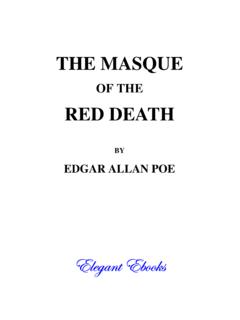
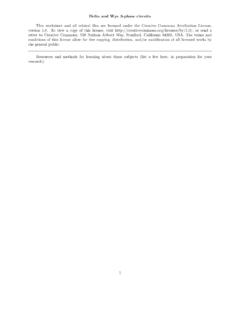




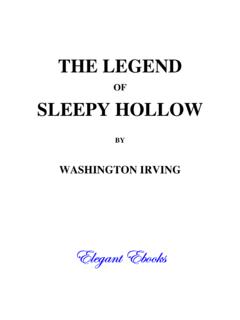

![[9] - ibiblio.org](/cache/preview/5/5/7/d/7/8/c/5/thumb-557d78c5e5b7e50924ac9fa19b799cb0.jpg)







